Yo ho! It's hot, the sun is not a place where we could live.
But here on earth there'd be no life without the light it gives.
We need its light. We need its heat. We need its energy.
Without the sun without a doubt there'd be no you and me. -They Might Be Giants
Ahh, the Sun. Beautiful and blinding to the naked eye, it's still the source of energy that gave rise to all of the life on Earth that we know.
The Sun emits energy all over the light spectrum, from long-wavelength radio waves (many meters long) to visible light to X-rays (just a small fraction of a nanometer). The surface of the Sun is an astounding 5,800 Kelvin, hot enough to melt (or sublime) absolutely everything we know, including tungsten, diamonds, and all known chemical compounds.
But not to worry, we're a good 93 million miles (150 million km) away from it, where the temperatures are much cooler.
I was recently asked a question that sounds simple, but is actually very deep:
How long would it take for us to notice if the Sun stopped shining?
Well, there are two ways to interpret this, and so I'll give you the answer to both interpretations.
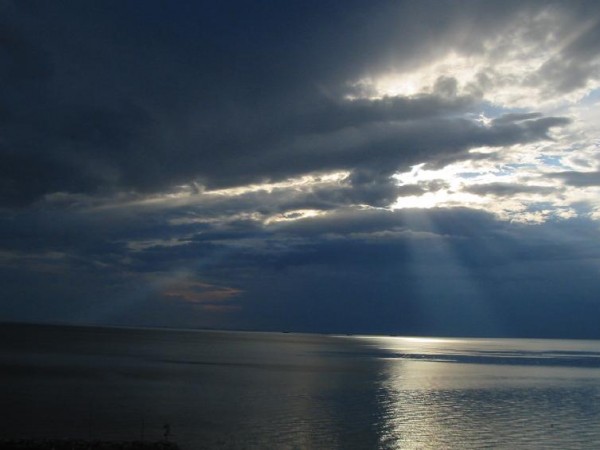
1.) The Sun simply goes out. If you heat anything up to a temperature of 5,800 Kelvin, it's going to emit light, much like your standard household bulb does. What if, for example, you suddenly cooled the Sun down to a much lower temperature so that it didn't emit light anymore? How long would it take us, here on Earth, to notice that?
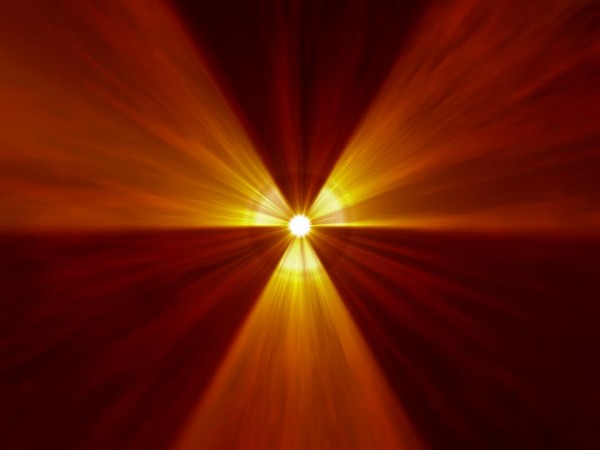
The only special thought you need to have is that the last of the Sun's rays would still be on their way towards us when you turned the Sun off. And light doesn't travel infinitely fast; it travels at the speed of light! So, depending where in its orbit the Earth is, it would take just under eight-and-a-half minutes (anywhere from 8:11 to 8:27, according to my calculations) for the lights to go out. And in this scenario, the Sun would go from its current colossal brightness to pretty much zero, instantaneously.
But what if I wanted a more physically realistic interpretation?
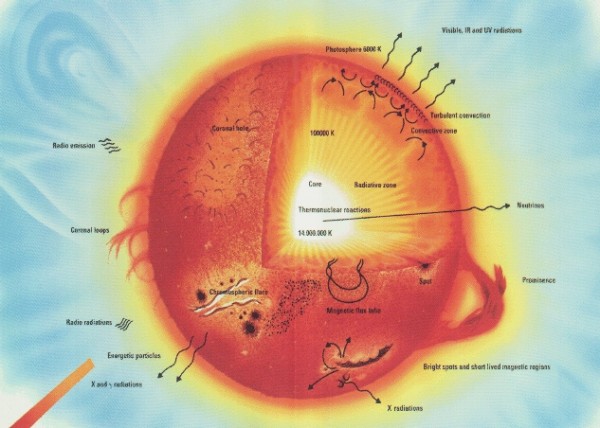
2.) The Sun's source of power -- nuclear fusion in the core -- suddenly stopped. This is a lot more interesting, and a lot more difficult to answer. Let's take a look at the science of what goes on inside the Sun.
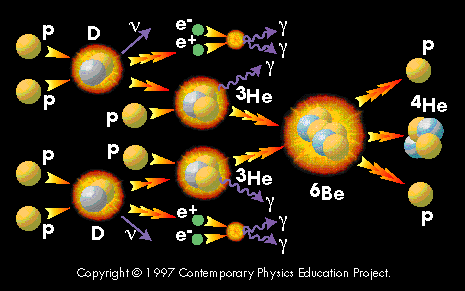
The core of the Sun -- the innermost quarter of it -- isn't at 5,800 Kelvin. It's more like 14 million Kelvin. Inside, it converts about 620 million tonnes of Hydrogen into Helium every second, releasing the energy equivalent of 1.8 billion of the most powerful nuclear weapon ever detonated. Every second.
But that energy that gets made in the core? Yeah, you wish it looked like sunlight. Instead, it's ultra-high-energy gamma radiation, which will either give you green skin and huge muscles when you get angry,

or will cause cancer and certain death, depending on whether you listen to Stan Lee or medical science.
But, fortunately, these gamma rays have hundreds of thousands of kilometers of Sun to go through before they head towards us. And this, perhaps unsurprisingly, is hard.
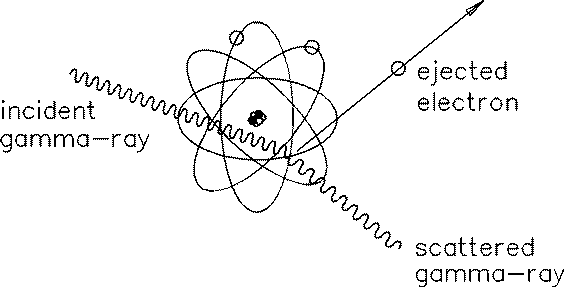
Each gamma-ray photon, once made, travels a maximum of a few millimeters before it gets absorbed and re-radiated. But when this happens, it gets re-radiated in a random direction and at a lower energy. It's still a photon, mind you, so it still moves at the speed of light, but it has to bounce around an incredible number of times, losing all that energy time and time again, until it finally reaches the surface of the Sun. Some take longer and reach lower energies, others get out more quickly while they still have higher energies, producing a nice, smooth spectrum.
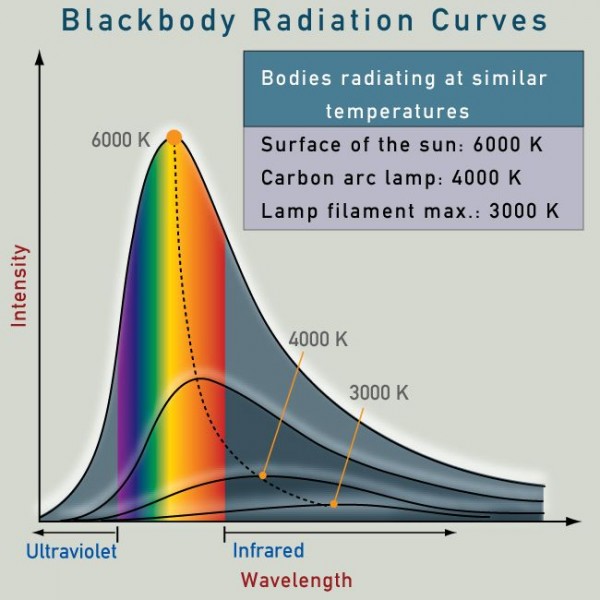
How long does this process take? Between 10,000 and 170,000 years. That's not an uncertainty, mind you. The ones that "get lucky" and get out quickly take about 10,000 years to do it, and are responsible for the highest energy (high frequency and short-wavelength) emissions of light, such as X-ray and ultraviolet light. The ones that take longer have more collisions and lose more energy, as they spend more time bouncing around in the Sun.
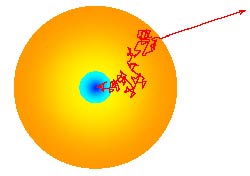
So what does this mean, overall? If the Sun suddenly stopped fusing hydrogen into heavier elements, here's how things would change (neglecting the collapse of the interior of the star that would ensue):
- For the first 10,000 years, everything would appear the same as always; there would be no drop in any measurable quantity coming from the Sun.
- After 10,000 years, the X-rays, UV-rays, and bluer forms of light would start to disappear from the Sun's spectrum. To us, on Earth, it would appear that the Sun was gradually cooling.
- After 170,000 years of gradual cooling, the Sun would have changed colors from yellow to orange to red to deep, dark red, and would have gotten progressively dimmer. Over these 160,000 years, the Sun would drop from its current brightness to about one-thousandth of that brightness. In other words, the Sun would look as bright from Earth as it appears from Pluto today.
- Beyond 170,000 years, the Sun will fade out of the visible spectrum and will only emit infrared light; at this point, there's nothing left to prevent the Sun from collapsing under its own gravity.
So the answer, surprisingly, is that if the Sun "went out," we'd have about 10,000 years before we noticed anything, and even then, it would just be a gradual dimming and cooling for over 100,000 years while we figured out what to do about it!
Luckily, with the laws of physics in place, this isn't something we have to worry about, but that doesn't mean I won't cash in on the film rights...
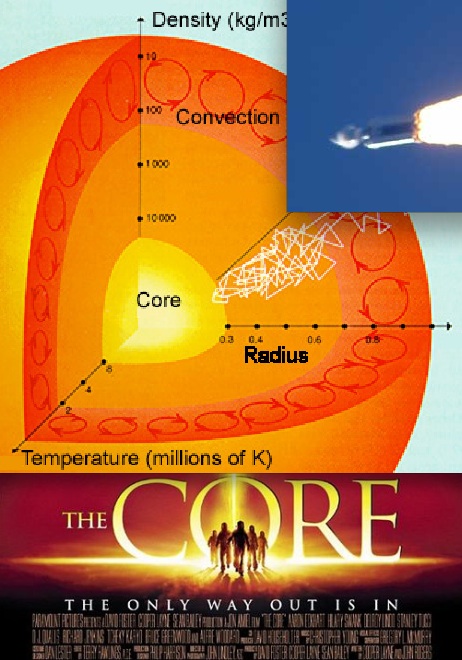
What do you say, Hollywood?
Update: I have been informed that this movie was already made: Sunshine. And it looks like I nailed the movie poster, too. (Thanks, SteveM and Nemo.) What can I say, Hollywood? There's still a chance to get it right...

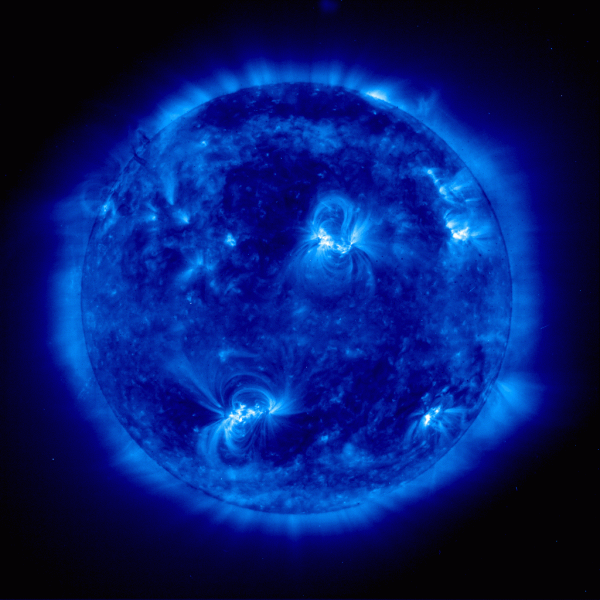
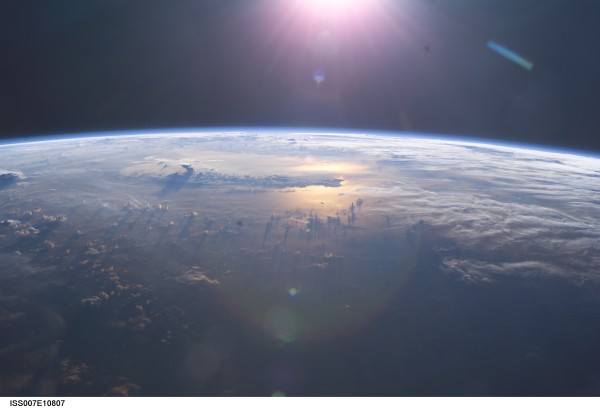
I think a more appropriate movie then The Core is Sunshine)
If the core stopped producing heat through some fusion-stopping magic, wouldn't it start decreasing in size from the centre outwards? The outer layers would still be hot because of the trapped photons, but wouldn't the centre cool to the same temperature as the rest? If this did happen, surely the Sun's decreasing size would increase the brightness?
It's already been done, strangely enough:
Sunshine
Geez, the posters are almost identical, too. I never realized before.
From your title, I thought you would answer the question, "How long would WE have if the sun went out". For instance, in the 8:27 minute situation, how long before the oxygen started freezing out of the atmosphere? Perhaps if we were knocked out of our orbit, somehow.
Interesting, I've not heard this explained before and the concept is fascinating. We take for granted that the sun will continue to shine and increase in size to a Red Giant phase, only to decrease to a white dwarf. Even if the Earth were lucky to survive and any possible life 4 or 5 billion years from now, the amount of sunlight from the white dwarf will be what Pluto recieves at this distance.
The short term theory or the long term theory, life will eventually become non existant upon the Earth. Glad there happens to be a few billion years left.
I took the title of the article incorrectly as well--how long would we have left to live on earth if the sun went out? There's a poem by Byron--called Darkness...
"I had a dream, which was not all a dream.
The bright sun was extinguished, and the stars
Did wander darkling in the eternal space,
Rayless, and pathless, and the icy earth
Swung blind and blackening in the moonless air;
Morn came and went -and came, and brought no day..."
And it goes on about how all the men started to burn everything around them just to see each other's faces, and things kind of break down from there--but, would we even last that long?
Actually, if the Sun stopped doing fusion, we'd know in 8 minutes... the Solar neutrinos would stop! (I *think* we still have observatories watching the solar neutrinos. I haven't actually kept up with it, I have to admit.) Unlike the photons, the neutrinos pretty much get straight out, unimpeded by the outer layers. This doesn't affect life on Earth, but it is something we watch in the modern era.
Also, I think there's something to what #2 says. If the core stopped fusing (for whatever magical reason), it would start to collapse. I suspect it would collapse making a degenerate helium and hydrogen core pretty quickly. There might be some kind of bounce as a result of that, which could send out a shockwave that might start ejecting the outer envelopes of the Sun as a planetary nebula. I suspect that the Sun really would not keep looking the same in optical light for "very long" (minutes? hours? days?) after fusion stopped, but I don't have enough intuition about it to make a good prediction.
If, by some magic, hydrogen fusion stopped, wouldn't the absence of radiation pressure cause a collapse until helium fusion or electron degeneracy started? How is 'fusion stops' significantly different from a regular running out of hydrogen?
i was thinking like 2,8, &7; wouldn't a star collapse inward without the heat pushing outward to balance out gravity?
"1. For the first 10,000 years, everything would appear the same as always; there would be no drop in any measurable quantity coming from the Sun."
Wrong! We'll notice the lack of neutrinos immediately (i.e. after 8 minutes). They are not really impeded by normal matter, so they reach us directly without any problem.
"i was thinking like 2,8, &7; wouldn't a star collapse inward without the heat pushing outward to balance out gravity?"
No. Until it cools enough.
I would have thought a reasonable answer would be a couple of million years. The Kelvin contraction time for the sun is about 20 million years, so if the fusion was turned off the gammas at the centre would be provided by compression heating. In fact, I suspect that the surface of the sun would get hotter as it shrank and it would only start to get cooler when the core hit total degeneracy and its structure started to look more like a white dwarf.
What would happen on Earth if the sun was fine but the sunlight stopped, say was occluded by some massive (yet very light) structure?
I think the famous papar by Lord Kelvin gives a better answer to this question. Anyone know of a reprint online?
Heh. Count me as one of the ones that took the build-up to Scenario #2 as meaning "he's going to talk about how the core would start collapsing".
But Scenario #1 isn't that straightforward, either. How quickly (leaving aside news bulletins, etc.) would people on the night side of Earth notice something? Would they have to wait for the (non-)sunrise, or would there be massive changes in weather or other effects on the scale of a few hours?
Forgot to add: there's a short story by Larry Niven, Inconstant Moon, that's relevant here.
haha... that stuff abt gamma ray and hulk is funny!
thanks again, wonderful post.
" the source of energy that gave rise to all of the life on Earth that we know."
Is this strictly true any more? Are all those lifeforms near deep underwater vents necessarily Solar based? They certainly don't depend on the Sun now.
I just want to echo comments #7 and #12 (and the other heating-through-gravitational-collaps comments). They're right (although I'd guess that the neutrino measurement would take a year or two of data and experiment-checking before anyone would believe it's conclusive).
@7
I was under the impression neutrinos are extremely difficult to detect on the earth. That's why they have them buried under lakes and underground. The detector are so sensitive that it easy picks up false reads of gamma radiation so I don't necessarily believe that we'd detect a sudden drop in neutrinos. I could be terribly wrong of course but that the way i understand it.
@4
Agreed. I was slightly disappointed because I was expecting the same. A brief spat on how the necessary components for life would slowly break down over time due to lack of solar energy. Everyone enjoys a good annihilation of mankind story. ;) Still a great post. I remember being blown away the 1st time I learned it takes 1 photon particle over 10,000 yrs to leave the sun and begin its trip to earths surface.
Re: Neutrinos: You are all right. Neutrinos would stop practically instantly. The last ones would last for a few seconds (after the ~8.5 minute lag), and then their emission would cease. Although they're incredibly difficult to detect, we can do it (and are doing it. It's odd that I forgot about them, considering I just wrote about them.
As for gravitational collapse, it is so much weaker in terms of energy production than nuclear fusion is that the added energy from collapse wouldn't do much.
Of course, what would actually happen, if you magically turned fusion off for a little bit, is that the core would start to collapse, pressure and temperature would go up, and the increased pressures and temperatures would make fusion possible again, which is what happens in variable stars.
As for how human life would die on Earth... let's see humanity make it 10,000 years past the industrial revolution first, because that question might not even be relevant.
@crd2: on the one hand, you are right - neutrinos are *really* hard to detect. But on the other hand, in the last decades researchers have achieved marvelous results in detecting them - up to this "picture" which still amazes me:
http://antwrp.gsfc.nasa.gov/apod/ap980605.html
Thanks for the link Bjoern. Absolutly amazing that they were able to detect so many neutrinos that they could produce an image like that. Its low resolution doesn't take away from the true beauty of the image itself.
Thanks for the explanation, Ethan. I've often wondered why the sun is so cool at its surface. How much of the core (percentage wise) is actually undergoing nuclear fusion?
" the source of energy that gave rise to all of the life on Earth that we know."
Is this strictly true any more? Are all those lifeforms near deep underwater vents necessarily Solar based? They certainly don't depend on the Sun now.
Posted by: lop | July 13, 2010 8:24
Everything depends on the Sun, there is a relationship with every system and the Sun.
Though not immediately evident and may be separated by many degrees...for instance the lifeforms near the (hydrothermal vents/smokers) you speak of, need the heat distributed, (in part) by the gravitational dynamics of the sun, moon and earth (tidal forces).The environment for these species is continuously maintained by plate tectonics, which is due (in part) by the warming and cooling of the opposite sides of the earth, among many other pertinant factors, it is a very dynamic system yet they all depend on the Sun.
The current moving nutrients within range of the environment created by the vents is driven by the Sun.
Even the soil laid down by nature/physics is polar oriented which is conducive to vegetative growth, (in part) a response to particle precipitation from the Sun.
The salinity of the ocean is maintained by a complex interaction of a percent of solar radiation delivered and configured by (Primarily,the magnetosphere,the ionosphere, the atmosphere, the troposphere, the lithosphere) and most effectively, The Biosphere...which all rely on the sun to function.
http://www.ridge2000.org/seas/for_students/reference/study_site_epr.html
No! The basic model for plate tectonic is mantle convection by a cooler lid, resulting in Rayleigh-Bénard convection. I.e. it doesn't matter that the solar energy flux on the surface (~ 100 %) is larger than the geothermal flux (~ 0.02 %). It is re-radiated, because _space is much colder than Earth_.
And I doubt very much that a moving night cooling, which may penetrate on the order of cm, would _even be noticeable_ on a body volume measured in thousands of km.
I don't even know what that means.
- How is soil "polar oriented"? Any polar chemicals are oriented by water, itself polar, which is mildly hexagonal as a "fluid lattice" due to its strong hydrogen bindings. It all looks random a bit away.
The geomagnetic field is too weak to affect that.
- Which solar particles besides photons "precipitates" on Earth? Solar wind protons will follow the geomagnetic field, some are trapped by van Allen belts, neutralized or otherwise leaked out at the poles to interact with the atmosphere locally and doesn't affect the soil globally.
They will give nice auroras though.
That is very facile and likely very wrong, at least if you look at primary mechanisms instead of "a bunched up system". It is mostly sedimentation and plate tectonics that regulates salinity, though the biosphere is indeed noticeable (say, on calcium levels).
So again geothermal energy has a large leverage, though sedimentation certainly is more weathering related so solar thermal flux dependent.
Oops. "by van Allen belts" - as van Allen belts.
Which solar particles besides photons "precipitates" on Earth?
Neutrons and some neutrinos do, of course, and some solar wind protons charge exchange with neutral atoms around the earth (this "geocorona" extends beyond the dayside magnetopause). These neutral particles are unaffected by magnetic fields. Also, particles with sufficiently high energies don't get turned quickly enough by the Earth's magnetic field (though most of these "cosmic rays" originate outside the solar system). All of these are small contributions to what happens in soil, so yes, most of Sphere Coupler's post is nonsense.
Iron-bearing minerals do show preferential alignment along the geomagnetic field in place at the time of rock solidification, which is how we know that the Earth's magnetic field has occasionally reversed. But again, that's the geomagnetic field, not anything to do with the sun.
Actually, Hollywood did consult scientists when they made this movie! From Wikipedia:
"To shape the science of the film, Boyle and Garland hired scientist advisers, including NASA employees and astrophysicists.[17] One physicist, Brian Cox of University of Manchester, was hired to advise the cast and crew after the director had seen Cox on the science TV series Horizon.[18] The physicist gave regular lectures to the film's cast members about solar physics. Cox also advised the filmmakers to scale down the nuclear device in the film from the mass of the Moon to the size of Manhattan."
You credited the song at the beginning of your post to They Might Be Giants. This is actually a cover that they did and have since updated to reflect today's scientific knowledge better. The new version is on their album "Here Comes Science".
The original song they're covering is from the 1950s and is on a collection of Science for Kids albums. If you'd like, I can send you an MP3 of the original.
This post and many comments are quite nice. A lot of things I didn't know. Thanks.
Well of course regarding what if "1.) The Sun simply goes out." and what if "2.) The Sun's source of power -- nuclear fusion in the core -- suddenly stopped."; but "Luckily, with the laws of physics in place, this isn't something we have to worry about."
But a couple of questions.
How big would a black hole have to be to swallow the sun?
Specifically, can a black hole the size of a grape (i.e the mass of the Earth) travel like an asteroid on a collision course and swallow the sun?
And if so, wouldn't all light and neutrinos immediately (8.5 minutes lag) stop being observed at Earth? And thus not even 1 day let alone 10,000 years or 100,000 years to figure something out.
Am I missing something; or is this kind of cosmic event disallowed by the "laws of physics"?
No, I'm not worried; I'm just wondering. Any thoughts please?
Interesting post, but as with others, not what I was expecting. I was wondering what the energy consumption of covering all our agricultural land in grow lamps would be. Or the effect on our weather patterns. Would increasing greenhouse gasses be a good thing? Hopefully, because we'd need to push our fossil fuel usage up a lot.
The FAA would have to spend some time rewriting flight rules - no more visual flight rules :)
What would we do about time schedules of day and night? I recall reading that most peoples' natural body cycles are an hour or two off 24hr. Would we have a global time zone? Would lots of companies switch to 24/7 operation in cycles?
I thought I would draw some protest with my comment...I'll start with the last first, a solar proton event can penetrate the magnetosphere which provides a filter in which most sun delivered particles are aligned with the ionosphere and the ionosphere directs a fair amount of current to the poles, but what isn't deflected is (in part) converted by energetic cosmic rays creating amongst other particles highly energetic muons, muons aren't as sharply accelerated when they encounter electromagnetic fields and have the capability to penetrate deep into the surface of earth and possibly deep into the ocean effecting life in ways yet unknown.
Solar energetic particles (SEP's)can alter the spheres. When I said the spheres can alter salinity, I speak of a highly complex relationship where many factors can come into play. When I mentioned the biosphere I was alluding to human burning of fossil fuels, affecting the atmosphere, trapping radiation delivered by the sun.
When I spoke of the Biosphere/lithosphere One effect is the disappearance of vegetation (namely trees) which absorb (trap) solar radiation along with tons of water which also happen to be in a growing change of state from a solid to a liquid and gas, thus diluting the salinity with fresh water.
Biosphere/Lithosphere mining destroys aquifers, removes streams (places even more water in the steam engine we call home), more water, more potential and a myriad of other negative effects.
Another factor of the biosphere/troposphere us-(airplanes)has a dampening effect on the pan evaporation rate (which incidentally the rate significantly increased after 911)for three days.
Sure cosmic radiation plays a major role in the delivery of highly energetic relativistic particles, yet it also has an effect on the magnetosphere, ionosphere, atmosphere concerning trapped particles delivered by the sun and is causal in the release of particles that filter down to the lithosphere.
Some Muons and Ions are generated in this way.
Let me jump back up to the polarization of particles as they are laid down on the lithosphere, first let me state the lightning is not the only mode of electron transportation from the atmosphere to the lithosphere, as you sit there you are enveloped by two to three hundred volts of electricity, granted some of this may be a result of the planet emission, however not all can be accounted for in this manner. Every object on the face of this planet can be considered an antenna each to it's own chemical makeup.
Do you really accept that if the Sun blinked off (magicaly disapeared)that the spheres (that are partially a feedback system) would continue unabated?
Not all electrons are absorbed by the ionosphere, a very small portion can leak thru when the ionosphere is saturated (most notably during CME's)The interference of power grids located many miles from the poles indicates a saturated ionosphere delivering particles or radiation waves if you like, to areas far from the poles.
I suppose I was a bit vague when commenting about polarized particles, magnetically aligned dirt. As I said before it is a very complex and interactive system in which the particle precipitation is bombarding us at all times enhancing the geometric alignment of naturally laid down soil. We are not talking dirt clods here.
The Auroral Electro jet is an example of a disturbed or locally saturated ionosphere which can effect the lower spheres.
As far as my comment concerning plate-tectonics I realize the warming and cooling of opposite sides of the earth is a very weak effect and even a weaker argument.
The whole construction of earth was influenced by the sun and many degrees of separation come into play.
If the earth did not orbit the sun, due to the lack of gravity pressure (gravitational contraction)the system of plate tectonics would have no meaning, it is (in part)from the creation of the body, to this day regulated by the sun. Yes the hill sphere indicates that earth has a dominate effect locally and more intense than the influence of the sun, yet we orbit the sun not the other way around.
If you want to see the whole system then just focusing on the primary mechanisms will lead to illusion, our solar system is a very dynamic and complex system in which no small part can be ignored or considered inconsequential.
It sometimes takes a long time for humans as a whole to recognize the discoveries of the individual such as Kristian Birkeland, who's discoveries were recently recognized.
Here is a article from a trusted source depicting geomagnetic induction from the original source (Sun) delivered through the spheres to lithosphere and quite honestly (I suspect)to the molten layer of the Asthenosphere and to be quite frank I sincerely believe there is a core to core relationship between the sun and the earth.
http://geomag.usgs.gov/downloads/pt2008.pdf
I am still waiting for the geologist to admit that all actions are not derived solely upon earths constituents, though given that the major employer of geologist are worldwide profit driven corporations I am not surprised.
Geophysicist should be providing the answers.
The molten layers of our planet are conductive, does that not lead one to believe that volcanoes and the ring of fire is not a node for electrical activity even if it may not be the primary mechanism?
When a plane flies near to an active volcano is it not susceptible to lightning (which is the disruption of electron flow)even though it is not in the plume trail?
The sun/earth system is far more dynamic than any one field of study can possess. The human race has a long way to go. Corporate greed, academic protectionism and government information lock-down seems to be a major obstacle to the advancement of mankind. I hope I'm wrong about this and I have seen some changes.
Wikipedia seems to be doing a good job of catching up.
Maybe what the world needs is more science blogs or more participation from scientist that are employed by conglomerate entities with complete anonymity.
"If the earth did not orbit the sun, due to the lack of gravity pressure (gravitational contraction)the system of plate tectonics would have no meaning, it is (in part)from the creation of the body, to this day regulated by the sun."
Seriously dude...WTF? Oh...wait...
"I am still waiting for the geologist to admit that all actions are not derived solely upon earths constituents, though given that the major employer of geologist are worldwide profit driven corporations I am not surprised."
Ah, conspiracy theory. That explains the pseudoscience.
http://www.geology.sdsu.edu/how_volcanoes_work/Heat.html
Seriously dude...It's not a conspiracy, it's called human nature and you'll learn about that when you get a little older.
S.C. -
In so far as these 'worldwide profit driven corporations' actually care about basic physics and geology, it is to better locate mineral deposits of all kinds. Hence they have an interest in scientific correctness.
Furthermore, given that currently these same corporations are forced to operate in countries with dubious governments and lack of rule of law (which increases risk and expense), such as the DRC, Russia, Afghanistan, or even Australia, they would jump at the chance to operate closer to home.
In short, you are arguing that these organisations are deliberately minimising their profits and maximising their risk.
#18-
Life at hydrothermal vents may rely on non-photosynthetic energy sources (sulfides, etc), but they rely on oxygen to use that energy. And oxygen comes from photosynthesis.
That said, there are instances of ecosystems on earth completely supplied with food and oxidant via natural radiolytic activity- natural radiation in rocks splits water, providing hydrogen and oxygen (which may be breathed directly or first oxidizes sulfur compounds to sulfate, which is then used by organisms). Examples include putative radiolytic hydrogen oxidizers in open-ocean sediments and an ecosystem with only one species in rocks cycling sulfur, with both oxidant and reductant provided by radiolytic activity.
I don't doubt the scientific prowess, I do however think that some information is held close to the breast, you can see this in all fields and trades.That is the human nature ingredient of which I speak.
"In short, you are arguing that these organisations are deliberately minimising their profits and maximising their risk."
Posted by: Andrew Dodds | July 16, 2010 10:05 AM
In what part of my dialog did you come to the above conclusion?
If your conclusion is an attempt to put my statements in a negative connotation, forget it, I have contact with geologist...Their personal integrity is not an issue.
Please direct me on this conclusion.
And here is another AGAINST:
for only the parameters of VENUS(R=0.7) to MARS (R=1.5)
ttp://arxiv.org/PS_cache/arxiv/pdf/0809/0809.4248v1.pdf
#39 Well, there may still be some debate about the cause of the radiation that you speak of, and to be brief herein lies the controversy.
add the h
FOR
ttp://arxiv.org/ftp/arxiv/papers/0808/0808.3156.pdf
ttp://arxiv.org/PS_cache/arxiv/pdf/0808/0808.3283v1.pdf
Spam filter blues read 42 43 then 41;
AGAINST
ttp://donuts.berkeley.edu/papers/EarthSun.pdf
And this is actually where the modern story starts
http://physicsworld.com/cws/article/news/36108
I'm not yet convinced the matter is closed and may be a sensitive topic.
I personally would like to see more research in this area.
#39 I'll bet you a dollar to a donut that you will find similar bacterial growth not only around the deep sea vents but around the other(what I call)Earth conducting nodes.
These nodes, such as volcanoes, gold mines, silver mines, and other mines or(formations) that are conductive.
Surly I can't be the only person to have attempted to map the incredible complex lepton flow from the core to the core. but like many things it is hard to see a function while you are immersed in same Medium, perhaps the study of other solar system bodies will (turn a light on)for those with the satellite/instrument capabilities. Even still there is very few Universities that even study the telluric currents that transverse the planet.It simply amazes me that this area is still not it's own major field of study.We have the population and manpower to accomplish.
While each field of study has components to add there is no cooperation and direction in this resolution.A solar system function as important and relevant as this should be it's own field of study, it's the only way to fully understand the complex system of our existence.I have said this before Sphere Coupling will rule the (positive)fate of us all, I think sci- blogs should be the one to do this, where people like us you know every individual that lives can contribute their small portion to the massive lepton transfer effects that seem so insignificant when viewed alone.
I've actually read a couple of books that involved this, as it apparently was a favorite subject of Arthur C. Clarke.
One of the older ones was Songs of a Distant Earth, where a non-descript event caused the Sun's fusion engine to shut down, giving humans 500 years to escape their planet. Given, that was written back in the early 80s or late 70s, so I imagine our understanding of the Sun has progressed massively since then.
The other book series was A Time Odyssey, that Clarke wrote with Stephen Baxter, where in the mid-21st century an anomaly in the neutrino production of the Sun is discovered, which leads to the revelation that a massive Jupiter-sized object has smashed into it many tens of thousands of years ago, leaving a scar on its core that is about to cause a massive sunstorm that would sterilize the solar system. From there it's a race to save Earth.
Both good hard sci-fi books, and I learned a lot about what we know of the sun today from the latter series (and outside reading sparked by it).
LtStorm,
I find it quite interesting that some authors either subconsciously or consciously (get it) and how deeply it influences their writing, and it works out to be an easy way to allow others to sense the validity and go out in quest.
Kinda neat how yesterdays (as you say HARD sci-fi) can become today's new technology, It is the study of Sphere Coupling, particle precipitation paths and effects that will lead to the discovery and resolution of our planetary woes, if only we can get past our collective tribal human nature deficiencies.
The web is the logical choice in this endeavour, much like the programs such as Galaxy zoo and moon zoo...
WHERE IS SUN ZOO? administered in the same professional manner as Galaxy and Moon Zoo(a network to link the Sun and other solar system bodies and all it's inherent effects)
Does one need any better reason than the betterment of mankind and his environment, some of us are affiliated with a corporation, some of us academia, some of us government, some of us more than one of these, yet we all belong to the Human race.
Want some more?
It was reported a couple of days ago that the thermosphere has collapsed, well that is a bit of dramatisation, yet the event, that happens to be the strongest collapse in 43 years is due (in part) to the solar minimum.
During my 30 year research/study/and experimentation of the spheres I have come to a simple conclusion that the system is adaptive within parameters and when one sphere is comprised the spheres on each side progressively will adjust to dynamically compensate within limits. It is just a physical reality.Don't push the parameters!
Read the article then search the TIMED mission for data base results.
http://www.space.com/scienceastronomy/091217-agu-earth-atmosphere-cooli…
Ask yourself which sphere has been compromised most by humans.Then ask yourself how this will effect humanity, look deep, critically think and if you cannot do this, or refuse then you are afraid and/or you head is stuck in the sand.
OK, then go to (add the h)
ttp://www.earthscope.org/instrumentation
and within this site look for the Magnetotelluric data, good luck.
Sorry that should be;
when one sphere is (compromised)
What effect will the oil spill have in the Gulf of Mexico?
I suspect that this years hurricane season will be dramatically reduced due to the heat capture or the insulation factors of oil released in the Gulf, at least until it dissipates, now think a little deeper, what effect does removing this oil from the earth have on our sustainability?
And if the reality of these events pisses you off, well, to bad, because we are ALL part of the problem.
Maybe this spill will wake some people up.
Want more?
Reducing the effectiveness of the above spheres will lead to a change in lithospheric voltage potential, what this means is that within a specific diminished relationship of system, the same amount of coal used to generate electricity with have to be increased to function within a higher ground state.(Another small piece to the puzzle)
This is not all doom and gloom,we should have changed in the 70's but procrastination is also part of the human nature. The changes will not be easy, sure as individuals we can adapt to a simpler less power utilising style, but this is not necessary.
The people that control these issues (every human alive)have directed us to the industrial age and we have made great strides in producing a higher standard of living, and to keep this standard we must change to live (with less degrees of separation)within the environment that is produced by the sun. The same people that provide us with oil and coal must be the financiers in this endeavour, they have gotten us this far and through massive cooperation with academia, government, and community as a whole we can sustain living (using) within the varying flux of the sun.
Electric coops were created by government and this is where the change must start.In these areas responsible solar and wind located at each home site and linked locally to the surrounding structures, and by responsible I mean environmentally friendly and highly engineered, and put in place by the Government, it's the next step on our journey through the industrial age to an age of independence.
WE must be the greatest generation, we have no choice.We are at war, but not amongst ourselves, we are at war with ourselves.
We must progressively make the change, if for no other reason...to create jobs.
Hey, Ethan, rename your website: "It Starts With A Bang And Ends Being Occupied By Sphere Coupler"!
Hey Duncan, I'm off my soap box now...OK?
And most of my comments were pretty close to *on topic*, (at least within a few degrees of seperation) till the of course.
Someone arrest S.C. for PUI (Posting Under the Influence)
According to the accompanying text the neutrino "image" spans 90 degrees of sky. Why is the "image" so much larger than the Sun's visual extent? I would have expected the area to be smaller as the neutrinos would presumably originate exclusively from the Sun's core. Is there a great deal of "blurring" due to imprecision in discerning the direction of the neutrinos?
Sphere Coupler: "... most of my comments were pretty close to *on topic*, (at least within a few degrees of seperation) till the of course."
After having scanned through most of your comments since you are posting here, I must say: sorry, your on-topic-claim is questionable. In many, if not most, cases you are promoting your personal theories, being far off from the real physics Ethan is dealing with. And: In my fun recommendation to Ethan I did *not* say anything about being on- or off-topic -- you are attacking a strawman. Even in this case you are off topic.
Strawman??? Where??? GET HIM!!!!! *raises pitchfork over head
SOOOOOOOOOOOO if you heat something up on the earth really hot it would create light nearly the same as the suns light when we recieve it.
Ethan --
Much of your post is seriously at odds with everything we understand about the structure and nature of stars.
1) Any star whose equation of state is dominated by one where the pressure is a strong function of temperature will contract and become WARMER on a Kelvin-Helmholtz (K-H) time scale (~10 million years for a star as our Sun) to maintain hydrostatic equilibrium (i.e., obeying the Virial Theorem) -- not cooler.
2) No collapse (which implies dynamical instability on time scales of minutes) would occur. Stars do not maintain hydrostatic equilibrium by the presence of nuclear fusion. The hot plasma throughout generates a temperature dependent pressure gradient -- period. Think of a protostar, or a star more massive than ~2 or so solar masses that has just left the main sequence with hydrogen fusion nearly shut down completely. These objects contract slowly on a thermal (K-H) time scale.
3) The radiation field within the Sun, even within the Sun's nuclear fusion core, is completely dominated by keV X-rays in the thermal ~1-10 million K plasma -- not gamma rays (not even the ones emitted by the nuclear reactions).
4) And any light that emerges from the Sun has virtually no clue as to what in the world is going on in the Sun's interior or core. There won't be some sort of selective change in spectrum as you describe -- except that which comes about because the increasing temperature of the entire Sun.
Pick up any standard text on stellar interiors and stellar equations of state -- Kippenhahn and Weigelt is one of the best out there.
it would totally suck if the sun went out
We would die if the sun went out, yes, that would suck. But could someone please explain to me, correctly, what would immediately happen if the sun "went out" and what would happen to life on earth (I don't know, I'm not a scientist or even close to it) or would we not notice... what would it look like to us, and how long would it take life on earth to crumble and disintegrate. I need your best guesses people, it's for something very important.
I think the correct theoretical question is what happens if the sun suddenly turned off and stopped immediately producing heat and light. The obvious and incorrect answer is everyone would die in short order. Actually, there are a number of ways for society to survive and so the question to be answered is what could humans do to survive?
Here is a random list of ideas and thoughts:
Energy production could continue to produce both heat and light. Nuclear reactors would not stop working without light. Even coal powered electrical plants would not necessarily stop. Strip mining could continue and even distribution of coal might continue. A massive greenhouse could be constructed to grow plants. Artificial lakes could be kept warm for fish.
For a while one would simply turn On the lights and heat if the sun went out. Food supplies would be the greatest concern. I don't know how many could be kept alive by enormous greenhouses, but I suspect millions could survive. There is also geothermal heat.
I do not know how quickly the Earth would cool. Nor do I know the entry requirements to keep a home warm when it is -400F outside.
Clearly, we could build large cities under some sort of dome and light and heat the city. We might be able to slowly increase the size or quantity of the domes and maintain life for millions of people.
I suspect that at some point oxygen would freeze int the atmosphere and then life would be less likely. I have no idea how long it might take.
Any thoughts on how humans would continue life if the sun magically turned off?
By the way, as for a black hole "sucking" in the sun I would think the black hole would then at least double the mass of the sun. I suspect the gravitation pull of the black hole, assuming it replaces the sun, might pull the Earth into the black hole.
this stuff is really shocking.i dont want my life to end but any i will be sure of what to do and not what to do
life would suck if there was no light on EARTH,just imagined how it would be like when it's dark
no wonder i'm even afraid of the dark how would i cope with the NATURAL DARKNESS?
FYI!
The Earth will be long GONE BEFORE the Sun is.
When the sun reaches it's red giant phase it's radius will expanded out towards the earth if not consuming the earth. At any rate the distance will be closed greatly in turn the earth will be cooked like an egg on a frying pan.
Ocean's will evaporated. everything will die
Unfortunately we live in a stupid materialistic world, with Ignorant people, and Governments with no thought to the future just the past and the present.
You can't take with you what you make, paper money is worthless, it holds no true value you can't eat it!. Soon when the Hyper-Depression becomes known vs the haze Politicians, Big Business greedy arrogant morons want you to believe. That's ok Uncles Sam's made sure the Private business can build space ships off this rock they are in the midst of blowing up. So we are intern slaves for the Rich among us to get space tickets out of here.
When people in greater numbers can't afford food then they will revolt but by then it'll be to late.
That's why we need to do away with politicians, money, banks for the most part, create a world of equality. If we insure that every single person in society can eat, go to school, have clothes on their back. That no one is homeless because we provide a home for everyone. No one needs to steal because we provide food and a living for everyone. Imagine if people no longer slave for a paycheck because society takes care of their basic needs. They dedicate their time their lives into what they are passionate about, music, literature, science, animals, people. What a world we could build.
Why do politicians go into politics if they don't have a burning desire to help their society the greater good. If that's not why they are their then the question becomes what do they get out of being in such place of power if not to benefit the people, then who?
Jack Layton, Tommy Douglas, Pierre Trudeau, Franklin Roosevelt. These are the kinds of people who dedicated their lives to the betterment of others.
"Love is better than anger. Hope is better than fear. Optimism is better than despair. So let us be loving, hopeful and optimistic. And weâll change the world."
Jack Layton - 1950 - 2011
Okay...Im just a simple guy with no knowledge of all these scientfic theroies. My buddy and I have a friendly bet over the question.....If the sun magically just "turned off", like someone flipped the light switch, how long would we have to live before life stopped existing?
My buddy says death would be instantiously for everone citing that we would immediatly freeze or the air would.
I think that we would survive, even if for a short period of minutes or hours.
Please dont reflect on if this happened, or if that happened...I would like as straight an answer as possible.
Death or life for a short time ? Thank You :)
Ole
24 HOURS.
Solar input into earth ecosystems is complicated.
For example, Sulfate bacteria often make up a large proportion of the ecosystem communities around hydrothermal vents. These bacteria get their energy from sulfate compounds. But the at least some of the sulfate compounds originated from the metabolism of other bacteria, elsewhere on the planet, who reacted sulfur compounds with oxygen, and the oxygen was produced by photosynthesis, which is powered by the sun.
The earth is probably sufficiently mixed that there are no ecosystems anywhere on it where some form of solar derived energy does not exist and where some form of organism exploits it.
Even the deep crustal communities probably exploit solar to some extent, if they exploit subducted minerals that originally formed on the surface with exposure to atmospheric oxygen.
I think the credit may be wrong on your first image:
Image credit: GOES satellite, in the X-ray.
I'm pretty sure that is an extreme UV image from from Trace or Stereo.
ever thing has a gravitational pull to it and the sun have the gratest pull fours why havent planets ben pulled in to the sun or is it hapening now but rill slow and thats global warming or something plz i have qwestens and no one have ansers plz help me i need to know if some one get enything on my comment get to me at (redariousharris7@gmail.com)
redarious:
Yes the sun is pulling on the planets, but the planets are moving tangentially (sideways relative to the line between the sun and the planet) fast enough that they don't fall inward but rather loop around. This is the basic phenomenon of an orbit.
This might help:
http://en.wikipedia.org/wiki/Orbit#Understanding_orbits
we still have a lot of time .i think by the time our earth one sun is cooling we will be on other plants or galaxies .i believe in that so much we may have a period or about 64000 years of slow development until we reach that stage but not more than that .
The Energy that is created and dispensed is relative to it's source. And who created this source of Energy? I think most of us know the answer. Don't we!
Brent,
Sure we do. The energy is derived from the energy of the initial inflationary field, which brought into being all the matter and radiation in the universe when inflation ceased. That IS what you meant, isn't it? This being a SCIENCE blog and all.
Wow
I don't think the sun will go out that way when fusion stops. Fusion is the force the keeps the sun from collapsing in with itself. Gravity and fusion is held in a balanced state where the latter will keep it from collapsing and the former from blowing it to smithereens. If the fusion slows down, gravity starts to take over. The star will start to collapse turning into a red giant where the star is compressed so greatly that it's gasses starts to expand. Hence, expanding the star also, engulfing the earth. And would be the end of life as we know it. In this case, the star's fusion will stop completely. Since there's no force countering the collapse anymore due to its immense mass, something else happens. The star will start compressing itself furthermore to the point where the core of the star heats up intensely and explodes. Leaving a very dense object in its core, a white dwarf. The sun will instantly became a white dwarf
where i live in yellowknife theres almost no sun all long winter
Wow! I am astonished by the amount of knowledge that has been imparted by the contributors on this blog! Each of you has taught me something and I can't even remember what prompted me to start a search that led me here. Indeed, I just became so engrossed in the original post and all the comments. I have been inspired to learn much more about physics, astrophysics, and astronomy. Anyone of you have some ideas for books that are geared to the layman? I am thinking something like Astrophysics for Dummies!
OMG! I am so satisfied from this website. Man, i wished tons of more people could be smart enough to come on this website an be amazed!
#votedbestwebsiteever!!!
Hey you guys I do think the SUN, MOON will burn out 4 million years. Sorry if you look at the basketball pictures 1997-2000. MASSABESIC.COM. I was number 32. In the center of b-ball pictures is a hirl 6'4r". Name is Sarah Bouchi. I gradauted in 2001. Name is Maureen Barnett.
No, it'll be here 4 million years no probs, Maureen. Even 4 Billion, though the solar system will have lost at least one inner planet by then.
The sun may last another 10 billion years, though unlikely much beyond another 7 billion.
4 million years sun will burn out.
I'm morbidly curious why you think so, Maureen.
What this biggest load of bullocks I have ever read, science today is all theory and very little practical science is carried out, they hit you with theses massive incomprehensible numbers and equations just to make the average Joe seem useless. They want you to believe that you are living on a spinning ball flying through the universe at a stupid speed and that we as humans don't feel the effects of this and that some how as well as us sticking to this sprinnig ball so does water, which some how is held down by this invisible force called gravity, but yet no one can recreate anything like it on any scale in a lab, ask yourself this!!! Why do AstroNOTS train in water?? Why are there space suits a totally enclosed unit, I.E it doesn't expel carbon dioxide, NASA will have you believe it's because it would create a thrust like action in space, but if space was a vacuum this is totally untrue as the carbon dioxide gases would need something for them to push against for this to create a thrust like motion, which just can't happen in a vacuum, you have to wake up people and smell the bullshit you are being feed here people
Well, retard, you necroed a thread just to complain and bitch and make unsupported claims.
Plus a lot of batshit crazy ones.
You have no mind. You have only terror and the "Good Book" that was beaten into you.
We are living on a spinning ball.
That ball has gravity which pulls everything toward the centre of the mass. We can even demonstrate that gravity exists in lab scale experiments with a torsion spring.
When you get your god evident in a lab scale experiment, call me.
Astronauts train in water because buoyancy means they weigh less than zero, and must train a new set of actions that will be in a place also quite unlike the playground they grew up in and you never grew out of.
The space suits are totally enclosed because if they weren't then the air they breathe would leak out and they'd suffocate.
No, NASA doesn't say it's because it would cause a thrust like action.
And a leak would create a thrust because it is pushing against the astronaut and the suit that contains and pushes against the gas in the spacesuit.
It totally can happen in a vacuum.
You have to stop. Nuke-grade stupidity is not going to help you influence people into thinking the religious people aren't all 100% batshit crazy when you're posting.